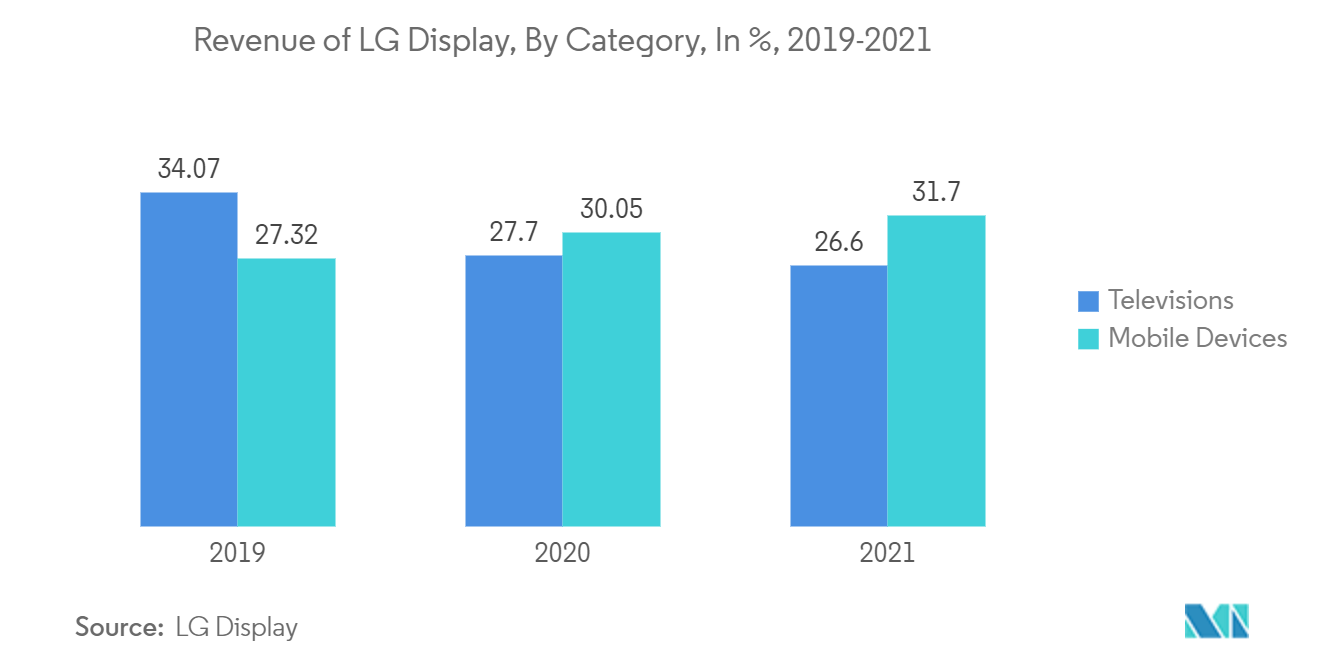Market Trends of Flexible OLED Industry
This section covers the major market trends shaping the Flexible OLED Market according to our research experts:
Mobiles and Televisions to Witness Significant Growth
- With increased smartphone adoption globally, the demand for high-definition ultra-high displays is growing quickly. With many companies, such as Apple and Samsung employing AMOLED displays in their flagship models, other companies are following the trend.
- But still, a flexible OLED provides several advantages, especially in mobile devices, such as lighter, thinner, and more durable displays than glass-based displays. These proved to be an important asset for mobile phone manufacturers, as they provided better performance, durability, and a reduction in weight.
- For instance, in May 2022, LG Display Co. Ltd announced bringing its next-generation OLED solutions to the 2022 Society for Information Display (SID) conducted in San Jose, California. The products included OLED.EX to Bendable and Foldable OLED panels. This innovation is expected to solidify the company's OLED leadership in the market studied.
- Additionally, in January 2022, the company announced to be preparing to supply OLED panels for the apple iPad by 2024. The company is planning to ramp up production in 2024, and it is expected that the first OLED iPad will undergo manufacturing before that.
- Further, various companies have been releasing smartwatches with flexible displays to stay ahead of the competition. In July 2020, the Nubia watch was released with a flexible AMOLED screen and eSIM support, among other features. The display is a 4.01-inch (960x192 pixels) flexible, bendable OLED display with 244ppi pixel density.

Asia-Pacific to Witness the Fastest Growth Rate
- The economies of major countries like India and China are growing, leading to an increase in the disposable incomes of consumers. Hence, moving toward adopting high-end electronic products, such as curved televisions and premium smartphones. Thus, driving the flexible OLED market in the region.
- For instance, in June 2021, Samsung announced the development of a flexible OLED display that could be invaluable to future wearable devices that can be stuck to the skin and conform to its surface. To create a flexible display, Samsung created individual OLED pixels that themselves are ridged and sit on a flexible elastomer surface. Connections between the OLEDs are made using a flexible material, as are the traces that connect the display to the driver system.
- Moreover, Chinese companies are moving quickly to set up large-scale production bases to churn out OLEDs. BOE is constructing a production plant for smaller OLEDs in the southwestern Chinese city of Chongqing. The OLED production line is the largest for a single factory in China, producing 115 million panels annually.
- Also, the Tech giant, Apple Inc., is investing in developing its foldable phone and has planned to start the assembly plant in India for premium iPhones. The commencement of this plant will make its phones available at cheaper rates than it is in the country. Hence, the demand will drive the growth of the flexible OLED market in the region.


